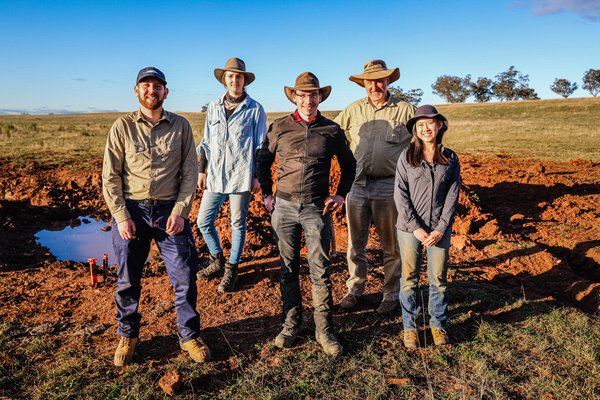Ancient fossils from Australia’s Red Centre
When we think of the Outback, we’re probably not imagining tropical reefs, a frozen wasteland, or giant wombats and crocodiles roaming the savannahs near Uluru. And yet that’s exactly the world I walked into on a recent expedition to the Red Centre, where I found a treasure trove of newly discovered fossils spanning more than 600 million years of Earth’s history.
The core of Australia isn’t static — it’s changed considerably since the dawn of animal life and continues to do so. My first glimpse of this was in the eastern MacDonnell Ranges, in the highly folded rocks of N’Dhala Gorge, 64km east of Alice Springs. Walking along the rivers snaking through this area is like travelling in a reverse time machine. The further towards the centre of the ranges you go, the younger the rocks become.

© Australian Museum
The oldest rocks at the entrance to the gorge date from the Ediacaran Period (555 million years ago). These tell the story of an entirely different Australia to the one we know today. The western and central portions of the continent were embedded in Gondwana. The eastern states of Australia had not yet fully formed. At the edge of the continent (which ran up modern South Australia and Northern Territory) was a shallow sea where primitive jellyfish- like animals thrived.
I could see their remains preserved on the surface of the rocks, typically as strange discs and indentations. Alongside their impressions were odd horizonal tubes through the sedimentary rock. These are traces of the first worms, burrowing through the mud looking for food.

© Australian Museum
Moving deeper into the ranges, I was travelling forward in geological time. Suddenly the impressions were joined by other recognisable features. These included the cross-sections of sponge skeletons, as well as more familiar marine shells. Particularly abundant were the crustacean-like trilobites; strange woodlouse-like animals that inhabited the world’s oceans before the dinosaurs.
The trilobites I found came from the Cambrian and Ordovician periods (541– 444 million years ago). It was during this time the margins of the continent were compressed as the Australian tectonic plate pushed up against the Proto-Pacific plate. This caused central Australia to be lifted above sea level and slowly drain. However, it wouldn’t be until the succeeding Silurian and Devonian periods (444–359 million years ago) that the sea would completely disappear.

© Australian Museum
It was initially replaced by freshwater rivers and lakes containing strange bony fish. Fragments of their armour plating could be seen in the very centre of the ranges, and resemble fossils found in south-eastern New South Wales. This is no coincidence as eastern Australia had started forming and was now also draining into the Proto- Pacific.
Towards the end of the Devonian Period the compression became so great that it completely dried out central Australia and pushed up the spectacular MacDonnell Ranges. The continent drifted towards the South Pole, and ice covered large parts of the land, so I never found any fossils from the subsequent Mesozoic Era (the so- called Age of the Dinosaurs, 252–65 million years ago).

© Australian Museum
Before the end of my journey, I went further north to a cattle station called Alcoota. Here, a fossilised series of lakes preserved the remains of animal life from the late Miocene Epoch (8 million years ago). These deposits developed as the continent began to sag when the Pacific and Antarctic tectonic plates had pulled away from Australia, relieving the compressional forces. The bones of the marsupials found at this site suggest that Australia had drifted away from the polar region at the end of the Mesozoic.
It split off from Gondwana and started to look more like the island we recognise today. The central part of Australia still wasn’t a desert, however, and would have looked more like the modern Serengeti. A highly complex ecosystem of marsupials, birds and reptiles existed. The largest predator was a 6m-long crocodile from the genus Baru, that would have fed on dirprotodontids, a family of rhino-sized wombats. All these have subsequently disappeared as Australia has marched slowly northwards and become more arid.

© Australian Museum
The first European explorers thought Australia was a young country, created as a separate “new creation”. However, the fossil remains found on my journey prove this is untrue. In fact, they demonstrate that life in Australia is remarkably old.
Central Australia alone has changed enormously over time. Going from being a tropical inland sea, a series of freshwater inland rivers, a frozen wasteland, a biodiverse grassland, and finally a red desert. Who knows what the next 550 million years holds for central Australia, and what stories its fossils will share?

© Australian Museum













